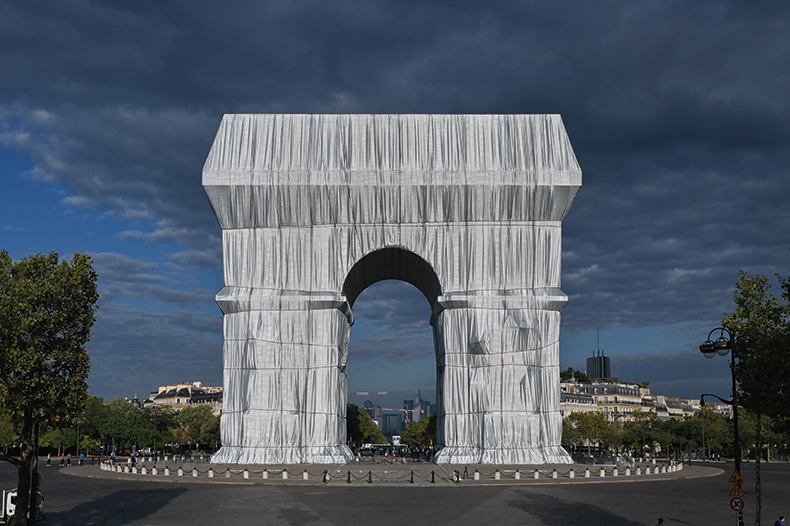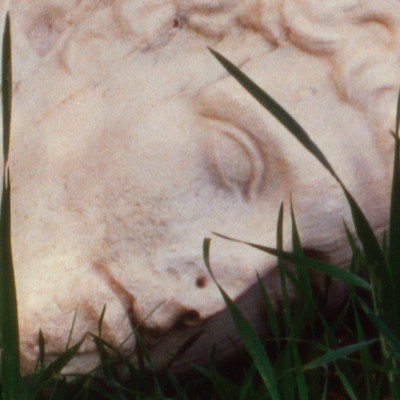From the July/August 2022 issue of Apollo. Preview and subscribe here.
If May in the international art market means New York – where this year a record $2bn of art was hammered down at Sotheby’s, Christie’s and Phillips – by the end of June, business shifts to London.
It looks much like business as usual following the huge disruption of the pandemic and the preceding nervousness about Brexit and its likely effects on the London art market. But six years after the Brexit vote and 18 months since the UK officially left the European Union, it is becoming clear to many that action is needed if London’s art market is to maintain its position in the top league of the art world.
‘London has huge appeal internationally,’ says Lucie Kitchener, chief executive of the art and luxuries fair Masterpiece, which has just opened (until 6 July). ‘But the government has yet to grasp the opportunities that leaving Europe could offer us. They need to do everything to remove administrative and financial barriers: at the top end, the art market has to compete globally.’
The UK art market grew rapidly throughout the 1990s and 2000s. New York has dominated in the post-war era, but research by analyst Arts Economics showed that by 2008 – when the market peaked before if felt the full impact of the financial crash – London was almost neck-and-neck. That year, the United States, UK and China had 35 per cent, 34 per cent and nine per cent shares of the pie respectively. The EU’s share, with the UK removed, accounted for 14 per cent.
The latest research into the art market by Arts Economics in 2021 presents a rather different picture. The EU is back to 14 per cent, with France taking a seven per cent market share. But the UK fell to 17 per cent – its lowest share in a decade. The United States, by contrast, accounted for a 43 per cent market share and China’s rose to 20 per cent. ‘The UK has had a difficult period,’ says the report’s author, Clare McAndrew. ‘Not only did it have the challenges of the pandemic, it is also coming to terms with the adjustments caused by Brexit. The UK had a slower recovery from the recession of 2020, while the United States, China and France all bounced back strongly.’
Crucially, the UK art market is what Anthony Browne, chairman of the British Art Market Federation, calls ‘an entrepôt’ – a port or trading post where merchandise is imported, stored or traded, usually to be exported again. Its collector base is international, not local. It means that London competes on a global stage against cities with lower taxes and more liberal regulations such as Hong Kong, still a gateway to the huge Chinese market, and New York. Despite leaving the EU, the UK, for example, continues to charge five per cent import VAT on art – the lowest level allowable under EU rules – while Hong Kong and New York have none.
The UK’s market dominance was clear, with its Frieze London fair inspiring the art world, year after year – the 2009 edition is shown here

Meanwhile, until the UK officially left the EU, it was the most attractive entry point into the single market. (Once inside, works of art can freely circulate.) Now that advantage has passed to France, centred on Paris, which charges 5.5 per cent: some EU countries charge more than 20 per cent.
Pierre Valentin is a leading London-based art lawyer. He says there is a risk of a sharp decline in London ‘from an international market to a national one within five years’ unless the government takes action. ‘We need the government to get into fifth gear,’ he says. Otherwise, there is a danger that ‘a large section of the international art market will either move west to New York or east to Paris or other European capitals – it’s happening already’.
Anecdotal evidence would seem to back this up: in June Hauser & Wirth announced it would be adding a Parisian gallery to its locations, joining David Zwirner and White Cube. Once the epitome of ‘Cool Britannia’, White Cube says that, after 30 years in existence, it will finally open a gallery in New York. The decision by Art Basel to launch a new fair, Paris+ par Art Basel, at the Grand Palais Éphémère (20–23 October) just days after London’s biggest fair, Frieze (12–16 October), has only added to the impression that Paris is in the ascendancy.
But conversations with other leading old master, modern and contemporary galleries tell varying stories. ‘Thirty years ago, London was the beating heart of the Old Master market,’ says Nicholas Hall, a British-born, New York-based Old Master dealer. ‘Now you look at the buying power of the top 10 museums for Old Masters and they are all in the United States.’ The shift, he says of the market from Europe to the United States, has been inexorable ‘since the days of Frick and Morgan’.
Fabrizio Moretti, an Italian-born old master dealer who started in Florence and now has galleries in London and Monaco, disagrees. ‘London is an irreplaceable capital of the art world: there is just New York and London, and no other European city will replace it,’ he says. As for Paris, he laughs out loud. ‘There’s a reason I live in Monaco,’ he says. ‘I love the sea, there are tax advantages and emotionally I like to be close to France and to Italy, my home country. But no one in business can live long with French bureaucracy.’ He is opening a palatial new gallery over three floors and across two adjoining historic buildings in London’s Duke Street, St James’s, on 1 July.
There are multiple forces in play, says Brett Gorvy, a partner in the new LGDR group with galleries in New York, Hong Kong, London and Paris. Brexit and the pandemic have combined with the rising power of Asian economies and transformative technology. ‘What we are seeing is the deconstruction of the art world, or the reconstruction, depending on how you view it,’ he says. ‘Paris is now clearly the foothold into Europe,’ he adds, with London having more of a ‘seasonal’ interest around major events such as Frieze.
‘Obviously we are in a period of adaption but the outlook for London is pretty positive,’ says Nicholas Maclean, a co-founder of Eykyn Maclean, which has galleries in London and New York. ‘I become a little frustrated when people start saying the art business is finished here because it isn’t, it’s just changing.’ He points out that although major galleries are opening spaces in Paris, they aren’t closing their London galleries. Indeed Hauser & Wirth is doubling its already large exhibition space with the acquisition of the lease of the Grade-II listed 19 South Audley Street in Mayfair. ‘We have a huge number of important artists who base themselves here. And that essentially is the basis of the whole art market. That alone will keep London as an important centre,’ Maclean says.
The ‘wrapping’ of Paris’s Arc de Triomphe in September 2021, the posthumous work of Christo, and a sign of the city’s creativity in action. Photo: Stephane Cardinale/Corbis via Getty Images

Most of the British art world was philosophically and vocally opposed to Brexit. There is a perception, not without reason, that the current Conservative government is uninterested in the arts. Secretary of State for Culture Nadine Dorries appears to be focused on dismantling the BBC’s and Channel 4’s funding structures and doing little else. Meanwhile Jacob Rees-Mogg, the minister for Brexit Opportunities and Government Efficiency, is set on cutting back Arts Council England and Historic England rather than cutting art market red tape. Chancellor Rishi Sunak provided more than £1.5bn in pandemic bailout funds to the arts, generous by most international standards, but even so, Britain’s not-for-profit museums and galleries – a major draw for international art collectors – are struggling. It is easy to look across the Channel to France’s grand cultural projects with envy: Christo’s 2021 ‘wrapping’ of the Arc de Triomphe, or the massive €466m refurbishment of the Grand Palais.
On economic grounds alone, the UK’s art market is worth supporting. It is a successful industry, generating an estimated £9bn in sales for the UK economy each year, and directly supports more than 40,000 jobs. There are several measures the government could, and should, consider to counter the perceived malaise in the market. Since it chose a ‘hard’ Brexit, it makes sense to deregulate to help the art market compete.
Experts say the UK could reduce the rate of import VAT on art to zero, in line with Hong Kong and New York: it is administratively simple and would flag a determination to smooth trade. Flawed European legislation, such as the artist’s resale right and importation of cultural goods rules, could be revisited and improved. Art businesses could be included in government plans for freeports, from which they are currently and inexplicably excluded. It could even be made easier for major collectors to bring the artworks they already own into their UK homes, or exempt certain art transactions from capital gains tax using tax breaks similar to the ‘like-kind’ schemes in the United States.
The UK could also seek to attract artists – including the overseas talent drawn to study at London’s leading art schools – to build successful artistic careers in the UK by investing in art education or subsidising studio space, which has rocketed in price since the 1990s. The art world itself can galvanise to put on ambitious shows and create the kind of buzz across museums, galleries and collectors’ spaces that made the early ‘Frieze Weeks’ so successful.
It is easy to feel nostalgia for the London of the early Millennium, when millions in Lottery cash poured into the UK’s arts and the City fuelled a booming art market. But fond memories of the world before the 2008 crash are of little use. London still has much to offer but the art world and the government have significant roles to play. As Kitchener says: ‘We can’t be complacent: we can’t say, “There’s so much here, we don’t need to do anything.” London has many strengths, even after Brexit, and it would be negligent not to use that as a foundation to build on.’
From the July/August 2022 issue of Apollo. Preview and subscribe here.



